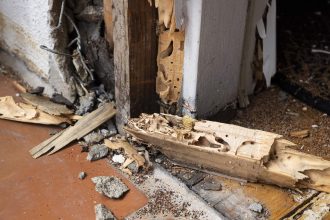Caring for your trees is crucial to maintaining the health and beauty of your landscape. Each season brings its own set of challenges and tasks, making it essential to provide the appropriate care year-round. While some tree care activities can be handled by homeowners, there are times when the expertise of a professional arborist becomes indispensable. Hiring an arborist ensures that your trees receive the correct treatments at the right times, from pruning during dormancy in winter to pest control in the summer. This blog will explore the importance of seasonal tree care and highlight the key moments when professional assistance is necessary to keep your trees thriving.
Pruning and Preparing for Spring
As winter recedes and signs of spring emerge, it’s time to focus on preparing your trees for the growing season ahead. Spring is a critical period for tree care, starting with pruning. Pruning in early spring, before the trees start to bud, promotes healthy growth and helps to shape the tree’s structure. It involves the removal of dead or diseased branches, which can harbor pests and diseases, potentially spreading to healthy parts of the tree.
Local climate and tree species play a significant role in determining the appropriate timing and methods for spring pruning. Hiring an arborist who is familiar with the specific needs of your trees can ensure that they are pruned correctly, reducing the risk of damage or disease. Whether that’s a Richmond, CA arborist or an expert in Aiken, SC, you can find qualified professionals in your area through online directories or by asking for recommendations from friends and neighbors. This is also an excellent opportunity to ask any questions you may have about tree care and get personalized advice for your unique landscape.
Promoting Growth and Addressing Damage
As spring progresses and trees begin to leaf out, it’s important to support their growth and address any damage that may have occurred over winter. One of the key tasks during this period is mulching. Applying a layer of mulch around the base of your trees helps retain soil moisture, regulate temperature, and suppress weed growth, all of which contribute to a healthier growing environment. Additionally, it provides essential nutrients as it breaks down, promoting robust tree development.
Inspect your trees regularly for signs of damage, such as cracked branches, broken limbs, or any indications of disease. Winter storms, heavy snowfall, or even wildlife can take a toll on your trees, leaving them vulnerable just as the growing season begins. Promptly addressing these issues is vital for the health of your trees. If you notice any significant damage or symptoms of disease, it’s usually best to consult with a professional arborist. They can assess the situation and perform necessary treatments, such as deep-root fertilization or pest control, to support recovery and stimulate healthy growth. Employing the expertise of an arborist ensures that your trees can recover efficiently and thrive throughout the spring and beyond.
Pest Control and Maintaining Health
As the temperature rises and summer sets in, trees become more susceptible to pests and diseases. Effective pest control is essential in maintaining the health and longevity of your trees. Regularly inspecting your trees for signs of infestation, such as unusual leaf discoloration, holes in leaves, or the presence of insects, can help in early detection and treatment. Common pests, like aphids, caterpillars, and borers, can cause significant damage if left unchecked, impacting not only the affected tree but potentially spreading to others in your landscape.
When it comes to managing these pests, integrated pest management (IPM) is a highly effective strategy. IPM combines cultural, biological, and chemical control methods to manage pest populations in an environmentally responsible way. Consulting with a professional arborist is beneficial as they can identify specific pests and recommend the appropriate IPM techniques. For example, they might introduce beneficial insects that prey on harmful pests or suggest organic sprays that minimize harm to the environment and other non-target organisms.
Preparing for Dormancy and Ensuring Safety
As the days grow shorter and temperatures begin to dip in autumn, it’s important to prepare your trees for the upcoming winter dormancy. Fall is an optimal time to focus on tree health and safety, ensuring they are in the best possible condition to withstand the harsh winter months. One key task during this season is to perform a thorough inspection of your trees for any structural weaknesses or potential hazards, such as overhanging limbs or branches that could fall during winter storms. Addressing these safety concerns early can prevent property damage and reduce the risk of injury.
Autumn is also a good time to apply slow-release fertilizer to give your trees a nutrient boost that will support root development during dormancy. This helps them emerge stronger and healthier in the spring. Additionally, some species benefit from late-season pruning to remove deadwood and improve overall structure. However, significant pruning should generally be avoided to prevent stimulating new growth that wouldn’t survive the winter.
Seasonal tree care is essential for maintaining the health and appearance of your trees throughout the year. While some tasks can be handled by homeowners, entrusting the expertise of a professional arborist ensures that your trees receive proper care at critical moments. From pruning in spring to pest control in summer and preparing for dormancy in autumn, hiring an arborist can help keep your trees thriving and your landscape looking beautiful year-round. Remember to consult with local professionals who are familiar with the specific needs of your trees and don’t hesitate to seek their advice when needed.











